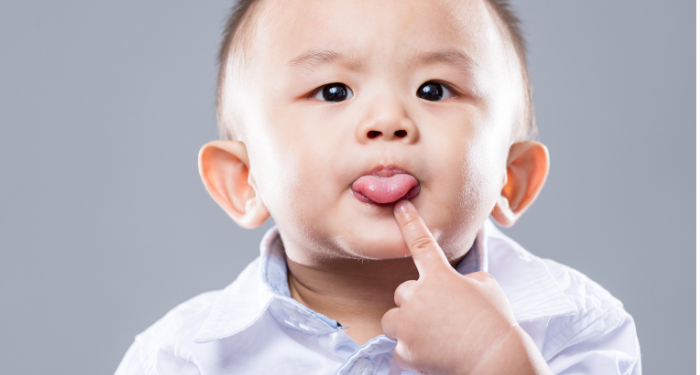
Believe it or not, posture directly relates to orofacial myofunctional disorders (OMDs). If we have poor posture or misalignment in our posture, we will often see OMDs as well.
In the feeding world we often hear the phrase, “what you see on your hips you see on the lips.” to put it simply, poor posture at the level of the pelvis will impact posture and full function on the face and in the mouth!
Let’s get a bit more technical…
A journal article from the International Journal of Orofacial Myology titled “Orofacial myofunctional disorders in children with asymmetry of the posture and locomotion apparatus” studied 352 children who were identified as having weak body posture. In this study, it was found that 70% of participants also had orofacial myofunctional disorders (OMDs).
Posture directly affects our ability to breath through the nose.
It begins with our oral resting posture. Correct oral resting posture means our tongue is resting on the palate, our mouth is closed, and we are breathing through the nose- not the mouth.
For optimal growth and development overall, including the orofacial complex, we must have proper posture.
Good or optimal posture when standing or sitting includes natural spinal alignment, without hunching or extension, the shoulders should be down and back, and the head should be centered on the shoulders.
Did you know…forward head posture, which is a very common postural condition where the head protrudes forward from the body, can reduce oxygen intake by as much as 30%?!
30% reduction in oxygen- and some people are in this posture chronically.
In turn, forward head posture is known to have a large impact on the respiratory system by weakening the respiratory muscles. It is commonly associated with OMDs and as myofunctional therapists, we should be aware of our patients posture and who we should refer to in order for our patient to make the most gains in therapy.
Forward head posture occurs when the head is positioned with the ears in front of the shoulders or the body’s vertical midline. In neutral head posture or optimal head posture, our ears should line up with our shoulders at midline.
Symptoms that often accompany forward head posture and should be red flags as we assess patients are:
- chronic neck pain
- tight neck muscles
- decreased range of motion of the neck
- Headaches
- jaw pain
- jaw pain in the temporomandibular joint (TMJ)
- numbness and tingling in arms and hands
- decreased balance control
- muscle spasms
- herniated or other disc problems
In some cases, myofunctional therapy is sufficient to address the root cause of forward head posture and gain optimal head and neck posture. Other times, we may need to refer out as needed. Our goal as myofunctional therapists is to address OMDs and assist our patients with getting to the root cause of their issues. If you want to dive deeper and become a confident myofunctional therapist®, join us in The Myo Method®.
Sources:
Korbmacher, H., et al. (2005). Orofacial myofunctional disorders in children with asymmetry of the posture and locomotion apparatus. International Journal of Orofacial Myology, 31(1), 26-38. DOI: https://doi.org/10.52010/ijom.2005.31.1.3




